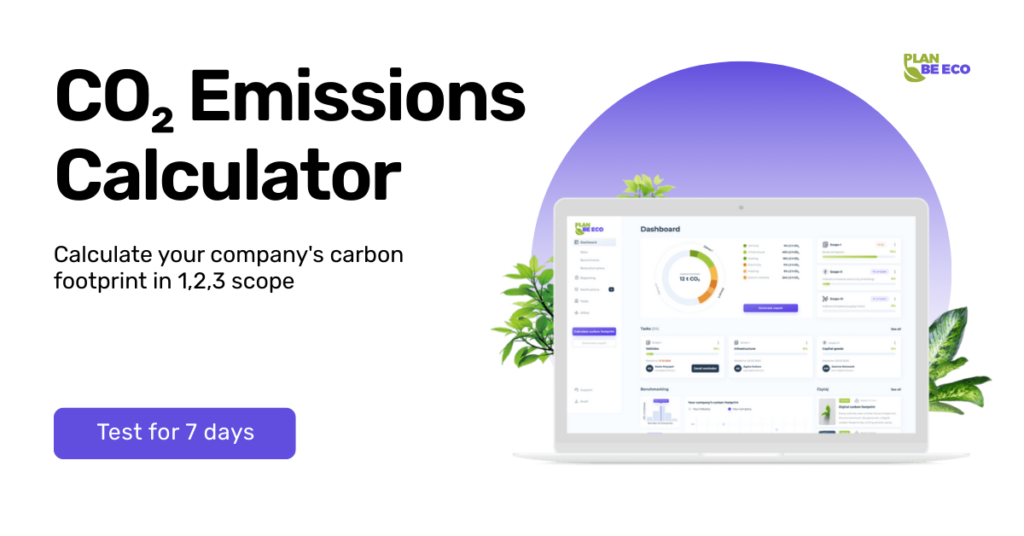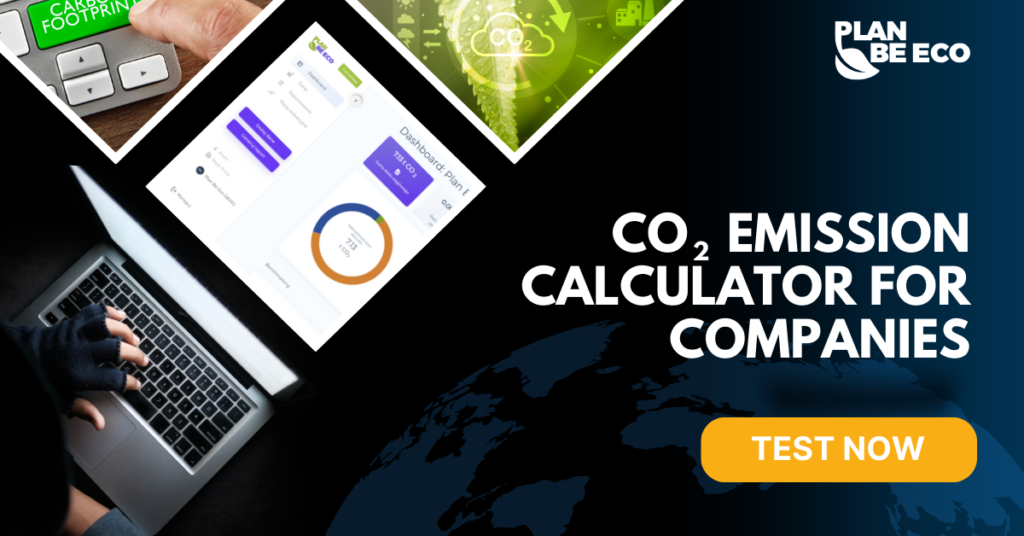How climate changes are impacting your business
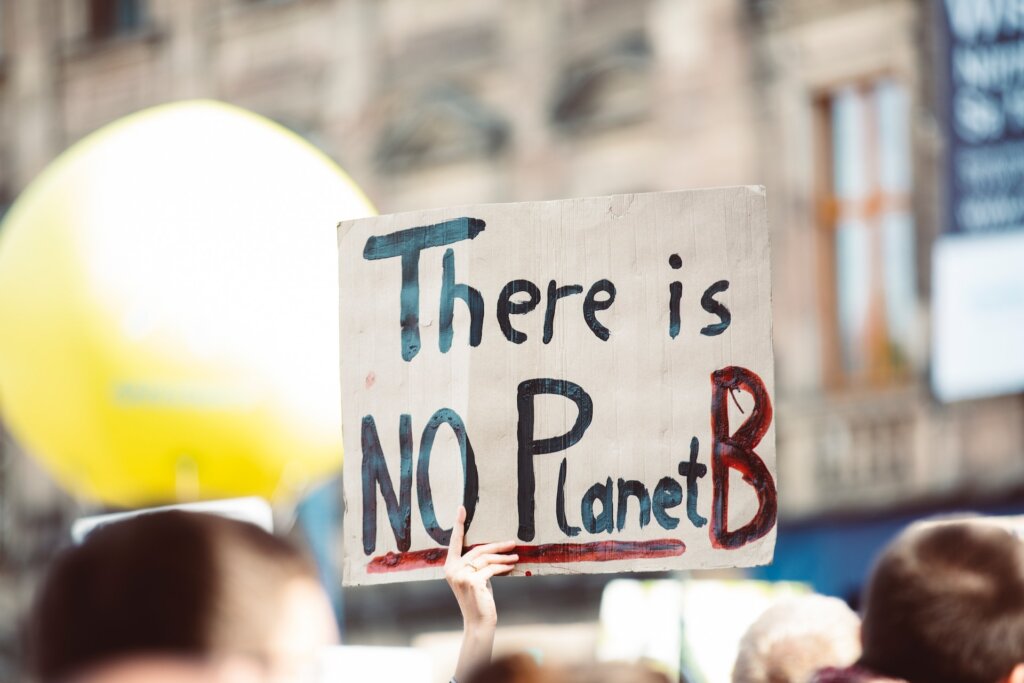
We are witnessing a climate catastrophe, and one way to combat it is to measure the carbon footprint. You’ll read about its origins and why it’s worth measuring below.
This article will present the connection between climate change and your everyday business. Global warming, extreme weather events, rising temperatures, and changing demand for consumer goods are the subject of operational risk management and can’t be neglected by business leaders worldwide. However, they need to understand the environmental impact made by their business and react accordingly to negative impacts.
Table of Contents
What is the current situation with climate change?
Climate catastrophe is happening right here and right now. The world has changed intensely in the lifetime of our generation.
97% of scientists agree – climate change is caused by human activity – the emission of greenhouse gases into the atmosphere
Since the beginning of the industrial revolution, the Earth’s average temperature has increased by 1.2 degrees Celsius.
Is that a lot? Yes. The consequences of climate change are already being observed on Earth today. Extreme weather events are becoming more frequent: droughts, heavy rainfall, or melting glaciers and permafrost.
We can still stop it, but to do so, we need to start reducing greenhouse gas emissions into the atmosphere today. How to begin – to change something, we need to measure it. Step one is to calculate your carbon footprint.
What does climate change look like?
It’s happening here and now, right in front of our eyes. In the most recent issue of the IPCC report (International Panel for Climate Change), published on April 4, the scientists give us no more than three years to cut greenhouse gas emissions drastically. If we don’t, our planet will boil. More species will become extinct (this is already happening!), and important ecosystems will disappear. It’s not difficult to imagine what humanity is about to face.
The climate clock is ticking
Do you remember the map of the world from your geography lessons? The Arctic Circle was always white and covered with ice. Remember permafrost? That Arctic is gone. The huge ice cap just disappeared. Within this region of the earth, climate changes so quickly that it surprises even scientists.
Permafrost in Siberia is melting so fast that houses, roads, and infrastructure are collapsing. The land that has always been „ice” is becoming soft due to a warming climate.
Why reducing carbon footprint is essential for business? Click and read.
A long time ago, in a galaxy far away…
Well, not so long ago because as recently as 1987. The year Gerard Pique was born, Nokia made its first phone, and Dirty Dancing got its premiere. Exactly 35 years ago, on our planet:
there were 5.052B people (as of April 2022, the number is 7.938B)
42% of the people lived in cities (in 2020, it grew to 56%)
we used 99,479 TWh of energy (171,240 TWh in 2020)
annual greenhouse gas emissions amounted to 35 Gt CO2e (50,1Gt CO2e in 2018)
the concentration of CO2 in the atmosphere exceeded 350 ppm (particles per million), and in 2021, it reached 416 ppm.
The increase is visible to the naked eye. 1987 is when the capacity of Earth’s atmosphere to absorb CO2 was exceeded, according to science. Increased greenhouse gas emissions will result in irredeemable changes to the planet’s climate.
How long do we have before climate change is irreversible?
It is difficult to pinpoint a specific timeline for when climate change will become irreversible, as the rate of change and its impacts will vary depending on a range of factors such as greenhouse gas emissions, natural climate drivers, and the effectiveness of efforts to mitigate and adapt to climate change.
However, it is clear that the sooner we take action to reduce greenhouse gas emissions and slow the rate of global warming, the greater the chances of avoiding the most severe and irreversible impacts of climate change.
There is still time to take action to avoid the worst outcomes, but the window of opportunity is closing. Governments, businesses, and individuals need to take urgent and meaningful action to reduce greenhouse gas emissions and slow the rate of global warming. It may involve transitioning to low-carbon energy sources, adopting more sustainable practices and technologies, and reducing consumption and waste.
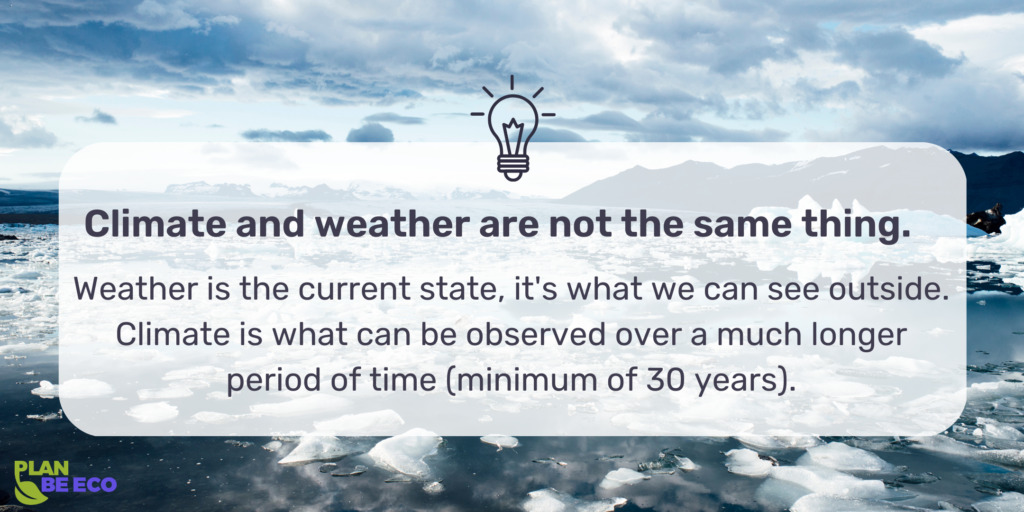
In Poland, at the beginning of April this year, a lot of snow fell. Perhaps you heard someone say, “this whole climate change is a hysteria. Just look at all this snow”? There’s a simple answer to this claim: climate is not the same as weather.
When speaking about the climate, we often refer to an increase in average temperature, e.g., by 1,2 degrees Celsius.
Why? IPCC scientists agreed to assume a reference point, the average temperature of 1850-1900, the years considered the beginning of the industrial revolution. It was when humanity learned to convert chemical energy enclosed within fossil fuels (coal, oil, gas) into mechanical energy. It allowed our civilization to achieve an immense transformation while devastating our climate.
Is that a lot? Yes, it’s a lot. Earth’s temperature increases inconsistently. There are regions where the increase is much higher and those where it is less evident. The Arctic is a good example. Temperatures there rise at an incredible pace.
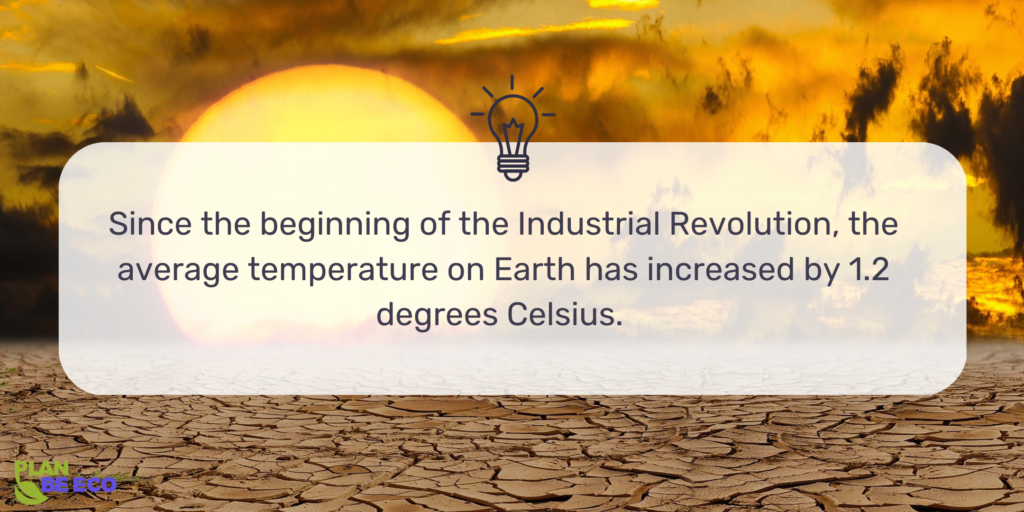
What causes climate change?
The increasing temperature of the atmosphere is what mainly causes climate change.
How does it work? When producing energy (for, e.g., heating, producing electricity, food, or transport), we mostly burn fossil fuels (63,3%) leads to generating greenhouse gases (carbon dioxide, methane, nitrous oxide, and others). Those gases remain in the atmosphere and cause an accumulation of heat, which reaches the Earth from the Sun and can’t escape. It leads to global warming or the greenhouse effect.
Carbon neutral vs climate neutral – learn more
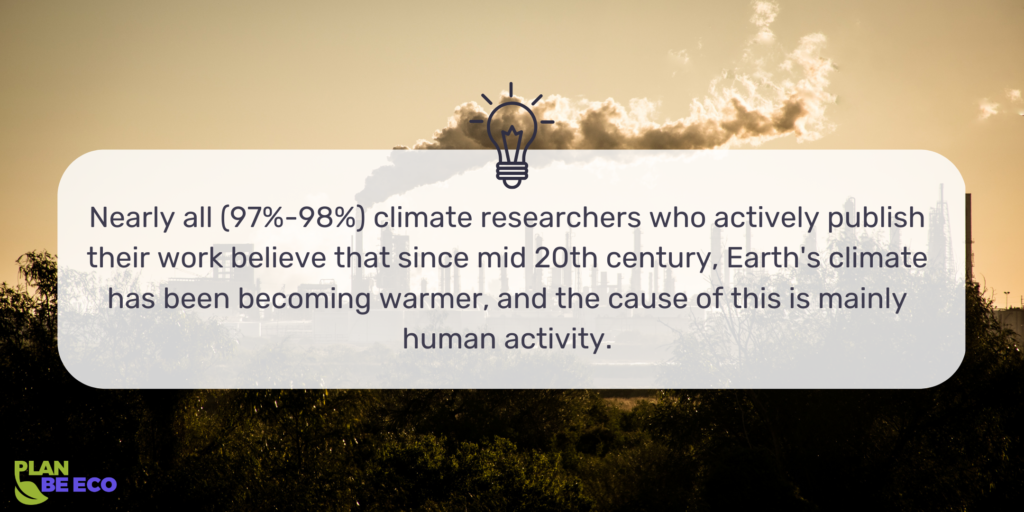
The fact that global warming exists is a good thing for the Earth because this allows our Planet to maintain the heat and not cool down too much (the average temperature is about 14 degrees Celsius, and without the greenhouse effect, it would probably reach as low as -19 degrees). However, it became a problem when as a result of burning fossil fuels, the concentration of greenhouse gases in the atmosphere drastically increased – that’s when the Planet stopped coping with it.
What are the effects of climate change?
-
extreme weather conditions
-
droughts
-
floods and storms
-
melting ice caps
-
rising sea levels
The above are just a few of the direct results of climate change. It is worth noting that all of these phenomena will influence food production worldwide, access to drinking water, flooding of cities, areas inhabited by humans and farmland, and climate-caused migration. The UN estimates that by 2050 over 216 million people will have to move away from their homes due to climate crises.
We could write pages and pages again about the results of climate change because they are all correlated, and every one of them leads to a chain reaction. Still, it also means we can focus on some of the necessary consequences, and if you’d like to learn more, you can do so by watching a clip published by the Planet-A Foundation.
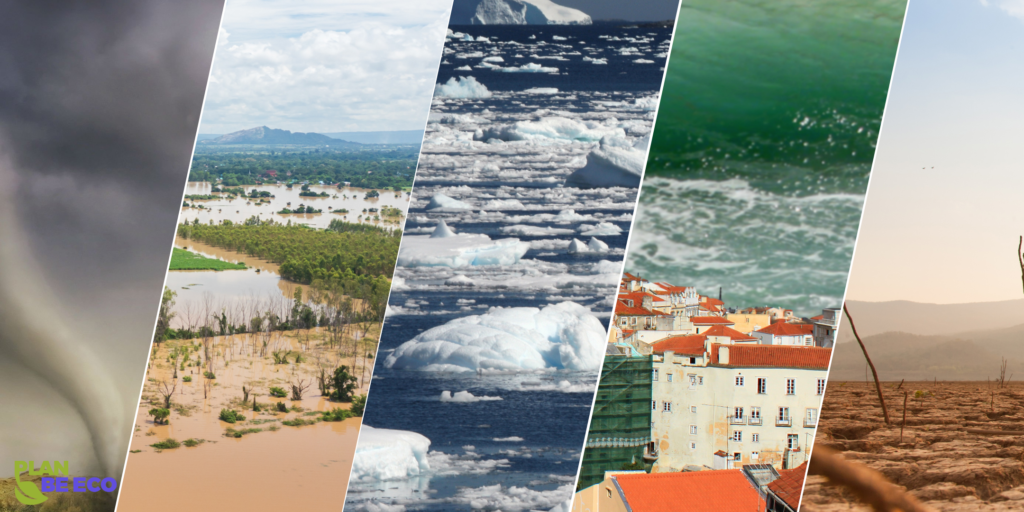
Companies and climate change
The effects of climate change, such as more frequent and severe natural disasters, changing weather patterns, and rising sea levels, can disrupt supply chains, damage infrastructure, and create new business risks and uncertainties. These impacts can affect a company’s operations, financial performance, and reputation.
Many businesses are taking steps to reduce their carbon footprint and become more sustainable to mitigate the impacts of climate change and adapt to a changing environment. This may involve implementing energy efficiency measures, transitioning to renewable energy sources, and developing more sustainable products and services.
Overall, the business community has an important role in addressing and mitigating the impacts of climate change.
How does climate change affect businesses
According to a Deloitte report, 91% of executives say their companies have already felt the impact of climate change. It can have both direct and indirect impacts on businesses. Some of how climate change may impact enterprises include:
Infrastructure disruptions: Natural disasters and extreme weather events caused by climate change can disrupt the infrastructure that supports digital businesses, such as data centers and telecommunications networks.
Supply chain disruptions: Climate change can disrupt global supply chains, affecting the availability of raw materials, components, and finished products.
Changes in customer behavior: As awareness of the impacts of climate change grows, consumers may become more environmentally conscious and demand more sustainable products and services from businesses.
Regulatory and policy changes: Governments worldwide are increasingly adopting policies and regulations to address climate change and mitigate climate risks, which may affect companies’ operations and business models.
Overall, it is essential for businesses to consider the potential impacts of climate change on their operations and to take steps to reduce their carbon emissions and become more sustainable. This may involve transitioning to renewable energy sources, adopting more efficient technologies, and developing more sustainable products and services. It’s good to start by calculating and reporting company carbon footprint.
What are climate related risks for companies?
There are two types of climate risk:
Transition risk – these risks arise from policy measures to move the economy away from fossil fuels. They are associated with the transition to a low-carbon economy. There are several categories for this type of risk:
– Policy and Legal – like increased operating costs
– Technology – change to those with lower carbon emission
– Market – reduced customer demand due to changes in preferences
– Reputation – stakeholder concern, reduced revenuePhysical risk – is the risk arising from climate events such as fires, floods, storms, or droughts. In simpler terms, the risks are related to the physical effects of climate change. Here, too, we distinguish more precise categories:
Acute – sudden natural disasters like cyclones,
Chronic – long-term changes and their effects, such as rising water levels
Which industries will be most impacted by climate change?
The answer is probably all industries. Climate change will have a range of impacts on different industries, and the specific results will depend on a variety of factors, such as the location and nature of the industry, the sector’s sensitivity to changes in the physical environment, and the industry’s capacity to adapt to changing conditions.
Some industries that are likely to be particularly affected by climate change include:
Agriculture: Climate change can affect crop yields, water availability, and pest populations, impacting food production and the agriculture industry.
Energy: The energy industry is likely to be impacted by changes in the availability and cost of fossil fuels and increased demand for low-carbon energy sources and emissions reduction.
Tourism: The tourism industry may be affected by changes in the availability of natural resources, such as beaches and ski resorts, as well as changes in the patterns and intensity of natural disasters.
Coastal and marine industries: Rising sea levels and more frequent and severe storms will likely significantly impact sectors that rely on coastal and marine resources, such as fishing, shipping, and tourism.
Insurance: The insurance industry may be impacted by an increase in the frequency and severity of natural disasters, which can lead to higher claims payouts. It will also result in rising insurance costs.
Overall, it is essential for businesses in all industries to consider the potential impacts of climate change on their business operations and to take steps to reduce their carbon footprint and become more sustainable.
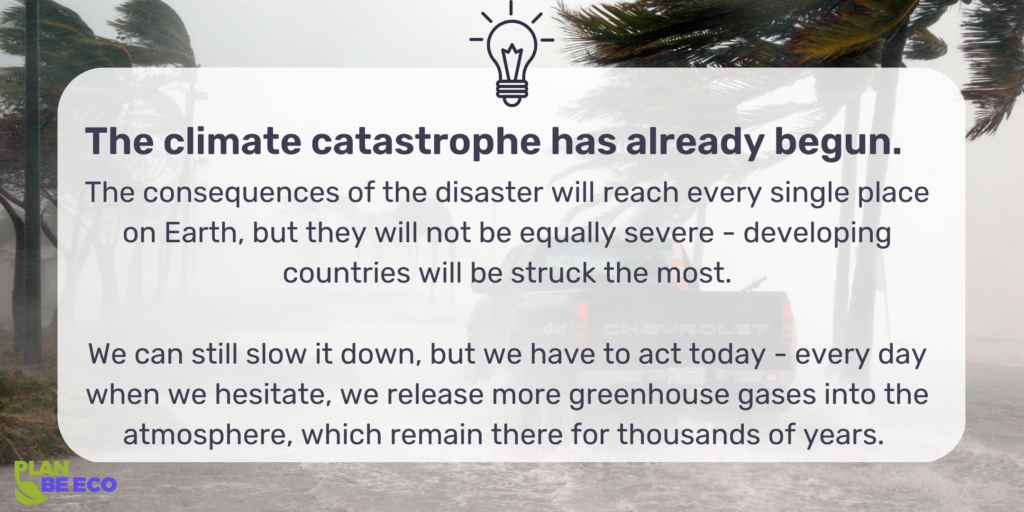
How long do we have to save the planet?
If greenhouse gas emissions are not halted, we have six years left to reach 1.5 degrees Celsius, the critical point of planetary warming, and 24 years to reach 2 degrees Celsius. According to the Paris Agreement’s recommendations, signatories should drastically reduce emissions to prevent irreversible climate change that threatens life on the planet.
Meet legal instruments to mitigate carbon emissions
Basic vocabulary to help you understand carbon footprint.
Intergovernmental Panel on Climate Change – A scientific and intergovernmental advisory body established at the request of the United Nations to provide objective and scientifically verified climate information.
The current state of the atmosphere in a given place at a given time.
